- Joined
- Mar 13, 2018
- Posts
- 35,147
- Solutions
- 330
- Reaction
- 129,171
- Points
- 22,157
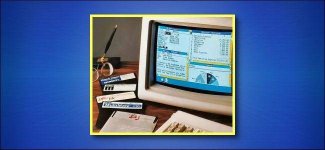
Microsoft released Windows 1.0 on Nov. 20, 1985. Starting as an environment that ran on top of MS-DOS, Windows became the most popular desktop operating system in the world. Let’s travel back in time, and take a look at what the original Windows 1.0 was like.
When GUIs Were the New Hotness
In the early ’80s, the tech press regarded mouse-based You do not have permission to view the full content of this post. Log in or register now. (GUIs) and multitasking as the hot new thing. It was similar to the current craze over augmented reality and neural networks.At that time, the entire industry was aware of Xerox’s work on the You do not have permission to view the full content of this post. Log in or register now. at PARC in the 1970s. A commercial version of that technology, the You do not have permission to view the full content of this post. Log in or register now., had shipped in 1981.
As personal computers improved in CPU speed and memory capacity, it became possible for lower-cost machines to run GUIs, which dramatically improved user-friendliness. In 1983, Apple released its $10,000 mouse-based You do not have permission to view the full content of this post. Log in or register now. computer. Meanwhile, less expensive, IBM PC-based GUIs (like the You do not have permission to view the full content of this post. Log in or register now.) started to appear.
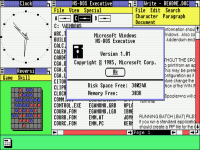
A Windows 1.01 desktop with tiled application windows (they couldn’t overlap).
The general trend toward GUIs in the industry prompted Microsoft to start working on an experimental precursor to Windows as early as 1981. However, the project formally launched a few years later, in 1983, and You do not have permission to view the full content of this post. Log in or register now..
It took two more years and a new project manager (Tandy Trower) before a You do not have permission to view the full content of this post. Log in or register now. was created. Windows 1.01 launched in 1985, but when it finally shipped, it made few waves in the industry. However, that first version laid the foundation for the future of Microsoft.
Using Windows 1.0
To use Windows 1.0 back in the day, you purchased a boxed copy of the software. Then, you either installed it to a hard disk inside your PC or ran it from two floppy disks. Windows 1.0 wasn’t a stand-alone operating system. Rather, it was a graphical application environment that ran on top of MS-DOS.Windows 1.0 supported CGA, Hercules, or EGA graphics. You could also use a number of mice that were on the market at the time, You do not have permission to view the full content of this post. Log in or register now.. A mouse wasn’t required, though. You do not have permission to view the full content of this post. Log in or register now., you could control Windows entirely with keyboard commands.
After booting, if you wanted to launch Windows, you just typed “win” at the MS-DOS prompt.
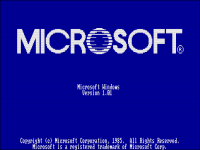
The Windows 1.01 splash screen (note the vintage Microsoft logo).
Windows 1.01 was the first public release version of Windows. Compared to the versions that followed, Windows 1.01 represented a fairly primitive graphical environment. It included a simple program launcher and file manager called MS-DOS Executive. This was a bare-bones list of file names, with nary an icon to be seen.
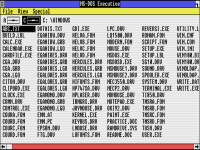 MS-DOS Executive on Windows 1.01.
MS-DOS Executive on Windows 1.01.If you clicked an EXE file in MS-DOS Executive, the program would open as an application window. You could maximize or minimize it using the Zoom or Icon functions, respectively.
When minimized, an application was represented by an icon on a simple task bar that stretched across the bottom of the screen. At any time, you could double-click an icon in the task bar to open that window again.
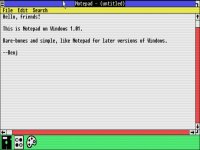 Notepad and the task bar in Windows 1.01.
Notepad and the task bar in Windows 1.01.Windows 1.0 also included several basic applications, including Calendar, Clock, Clipboard, Cardfile, Terminal, Notepad, Write, and Paint. Notepad was suitably Spartan in function, and Paint only supported monochrome graphics.
The software also ran MS-DOS programs within a window, but few single-task DOS applications behaved properly in this new multitask environment.
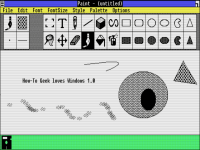
Unlike later versions of Windows (and the Macintosh OS), Windows 1.0 didn’t support overlapping windows. Instead, windows could only be tiled side by side on-screen, and their contents would automatically resize to fit the available space.
According to many Windows history websites, Microsoft made this decision to avoid similarities with MacOS. However, You do not have permission to view the full content of this post. Log in or register now., it might have just been the preference of an earlier project manager and there was no time to change it before shipping.
While it’s primitive by today’s standards, Windows 1.0 was still an impressive start, considering the low-powered PCs that could run it at the time. It laid the groundwork for future expansion on the concept. Additionally, some of its innovations informed successful new Windows features later on, including the task bar introduced on You do not have permission to view the full content of this post. Log in or register now..
RELATED: You do not have permission to view the full content of this post. Log in or register now.
Reversi: The First Windows Game
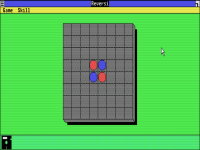
Windows 1.0 shipped with the first ever commercially published Windows game: Reversi. This strategy board game was programmed by Chris Peters at Microsoft just as an experimental exercise. However, it was later included in the Windows 1.0 release as part of a set of built-in applications.
Reversi is based on Othello, and it has four levels. Unfortunately, it’s also brutally difficult. It didn’t gain as many fans as later Windows gaming staples, like You do not have permission to view the full content of this post. Log in or register now.and You do not have permission to view the full content of this post. Log in or register now.. Nevertheless, Reversi did ship with Windows up to You do not have permission to view the full content of this post. Log in or register now..
Very few commercial games ever saw release for Windows 1.0. In fact, the only one we know of is You do not have permission to view the full content of this post. Log in or register now., the geopolitical strategy game created by legendary designer, Chris Crawford. This might make Balance of Power the official second Windows game, if you don’t count the internal ones developed at Microsoft, like Puzzle and Chess.
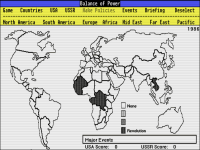 The only known commercial Windows 1.0 game: Balance of Power.
The only known commercial Windows 1.0 game: Balance of Power.Over the next few years, developers released You do not have permission to view the full content of this post. Log in or register now., but you can count the total number on two hands. It’s possible Windows didn’t see another retail game release until 1991 (Battle Chess for Windows 3.0).
Reception and Legacy
Windows 1.0 received a lukewarm response from the press when it launched. Having first been announced in 1983, most considered it two years late. Plus, other windowing systems for PCs and the Macintosh OS surpassed it in style and capabilities.In 1985, PC mice were also expensive accessories. Given the lack of applications available for Windows, there was also no killer app to drive adoption at that point. Even Microsoft’s Word and Excel programs wouldn’t ship with Windows for another year.
Costs would have to come down and baseline PC You do not have permission to view the full content of this post. Log in or register now. before that could happen.
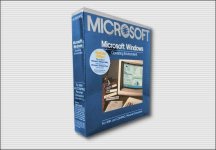
A boxed retail copy of Windows 1.0.
Still, Windows 1.0 was a big first step into a huge new product line, even if Microsoft didn’t realize it at the time. Since then, we’ve seen at least a dozen major versions of Windows, from Windows 2.0 to Windows 10. And that’s not even counting the offshoots, like the Windows XP Tablet Edition and the Windows Phone.
Windows is still big business for Microsoft, and it all started 35 years ago with Windows 1.01. Believe it or not, Microsoft continued to support the Windows 1.0 Standard Edition You do not have permission to view the full content of this post. Log in or register now.—a full 16 years after its release, making it the longest-supported version of Windows to date.
RELATED: You do not have permission to view the full content of this post. Log in or register now.
How to Run Windows 1.0 in Your Browser
Want to try Windows 1.0 yourself? It’s as easy as You do not have permission to view the full content of this post. Log in or register now., where you’ll find a full emulation of an IBM PC running Windows 1.0 in JavaScript.It’s worth noting that the PCjs simulation of Windows 1.0 has a squat appearance on modern screens. This is because it displays a 640 x 350 EGA window with square pixels. Back in the day, this would have been stretched to a 4:3 screen ratio, like a traditional CRT monitor. All of our Windows 1.0 images above were adjusted to match the way they would have originally appeared on vintage hardware.
While you’re using the Windows simulation, try running Paint or playing some Reversi. You’ll see just how far we’ve come.
Happy birthday, Windows!
From: You do not have permission to view the full content of this post. Log in or register now.
Attachments
-
You do not have permission to view the full content of this post. Log in or register now.